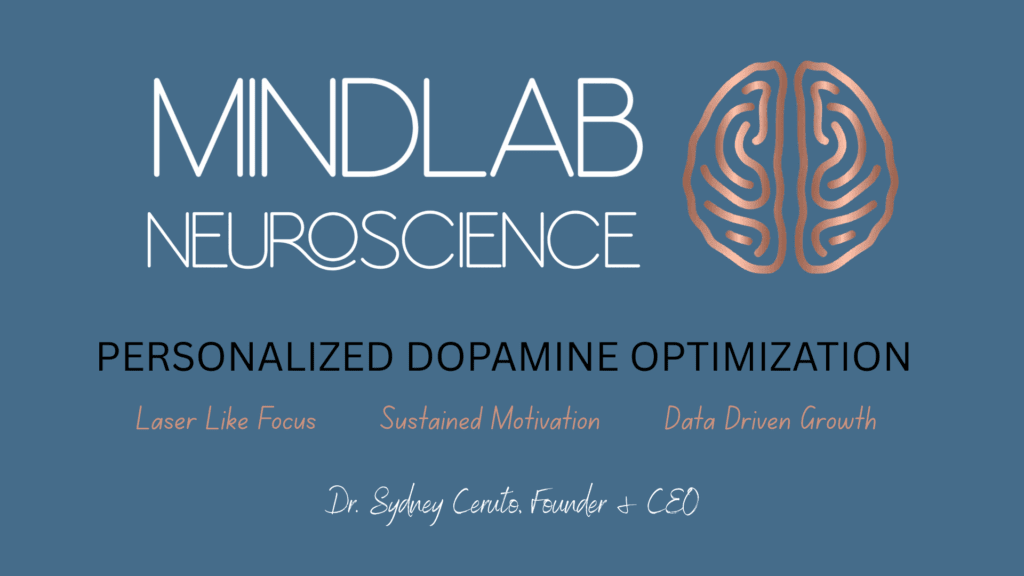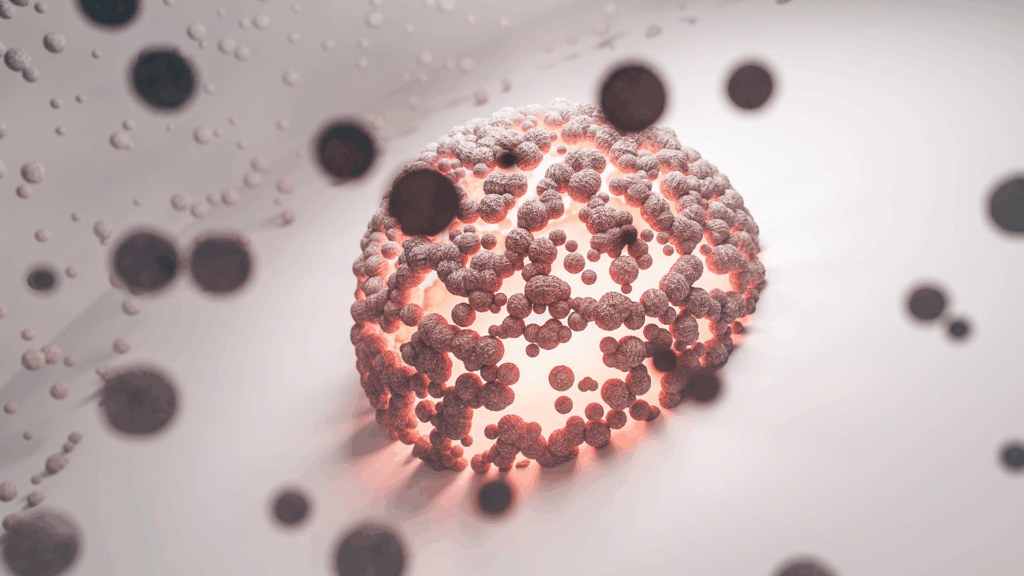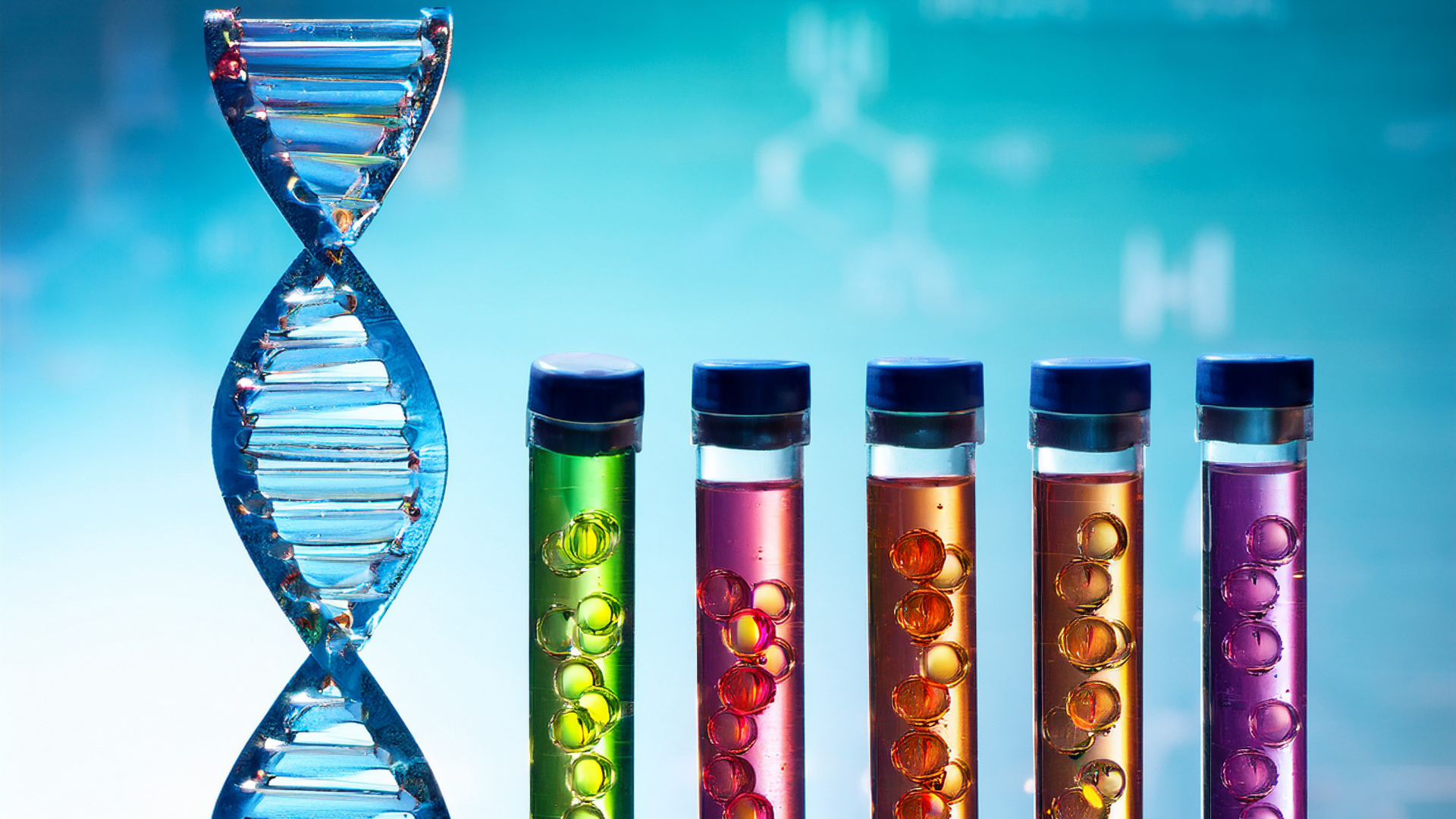Have you ever wondered why some executives make brilliant decisions under crushing deadlines while others freeze? Why certain leaders seem naturally driven while others struggle with motivation? The answer lies in your DNA. Dopamine genetics and personalized neuroscience is revealing that your genetic code determines how your brain processes dopamine, the master neurotransmitter controlling motivation, reward, learning, and executive function. For high-performing professionals, understanding these genetic variations isn’t just fascinating science—it’s the competitive advantage that separates good from extraordinary.
Recent breakthrough research demonstrates that specific genetic polymorphisms in dopamine-related genes create profoundly different neurochemical profiles. The DRD2 gene, which codes for dopamine D2 receptors, shows variations that can reduce receptor density by 30 to 40 percent in certain individuals. The COMT gene determines whether you’re genetically a “warrior” who thrives under stress or a “worrier” who excels in calm environments. The DAT1 gene influences how quickly dopamine clears from your synapses, affecting everything from impulse control to sustained attention. This is dopamine genetics personalized neuroscience at work, transforming abstract genetic data into actionable insights for peak performance.

Understanding Your Dopamine Genetic Blueprint: Personalized Neuroscience
The foundation of dopamine genetics personalized neuroscience rests on understanding three critical genes that govern dopamine neurotransmission. Each gene variant creates distinct advantages and challenges, explaining the remarkable diversity in how people learn, make decisions, and maintain motivation.
The DRD2 gene, located on chromosome 11, encodes the dopamine D2 receptor—the primary landing site for dopamine in the striatum and prefrontal cortex. The TaqIA polymorphism, technically located in the adjacent ANKK1 gene but in strong linkage with DRD2, profoundly influences receptor expression. Individuals carrying the A1 allele express approximately 30 to 40 percent fewer D2 receptors compared to A2 allele carriers. This genetic variation affects reward learning, working memory, cognitive flexibility, and even body metabolism. Research published in 2023 demonstrates that the ANKK1 gene is necessary for striatal function integrity, influencing learning, impulsivity, and behavioral flexibility—all essential executive functions for leaders.
Studies using polygenic dopamine scores that combine multiple genetic variations show that individuals with lower endogenous dopaminergic tone actually benefit most from dopamine-enhancing interventions, while those with naturally higher dopamine levels may experience detrimental effects from the same interventions. This is the essence of dopamine genetics personalized neuroscience: one-size-fits-all approaches fail because your genetic architecture demands customized strategies.
The DRD2 A1 allele demonstrates remarkable associations with cognitive performance. Research from 2024 reveals that DRD2 variants significantly influence mathematical ability through their effects on working memory. The A1 allele correlates with altered reversal learning, meaning individuals with this variant show subtle differences in how they adapt when rules change—a critical skill in today’s volatile business environment. Functional MRI studies demonstrate that A1 carriers show diminished recruitment of the ventral striatum and lateral orbitofrontal cortex during behavioral reversals, explaining why some executives struggle more than others when strategies must pivot rapidly.

The Warrior Worrier Divide: COMT Gene Variations
The COMT gene presents perhaps the most actionable insight in dopamine genetics personalized neuroscience. COMT encodes catechol-O-methyltransferase, the enzyme responsible for breaking down dopamine in the prefrontal cortex. The Val158Met polymorphism creates two dramatically different phenotypes that researchers have dubbed “warriors” and “worriers”.
Individuals with the Met/Met genotype (AA) are “worriers”. Their COMT enzyme operates at only 25 percent of wild-type efficiency, resulting in higher baseline prefrontal dopamine levels. Under normal conditions, worriers demonstrate superior cognitive performance, better executive function, enhanced verbal memory, and improved reading comprehension. They excel at complex problem-solving when stress is low. However, when pressure mounts and stress hormones flood the prefrontal cortex with additional dopamine, worriers experience cognitive overload. Too much dopamine impairs their performance, leading to anxiety, decision paralysis, and decreased working memory under high-stakes conditions.
Warriors with the Val/Val genotype (GG) present the opposite profile. Their highly efficient COMT enzyme rapidly clears prefrontal dopamine. Under baseline conditions, warriors show slightly lower cognitive performance than worriers. But when stress strikes and dopamine surges, warriors shine. They rapidly metabolize excess dopamine, maintaining optimal prefrontal function when others crumble. Warriors make better decisions under pressure, demonstrate greater stress resilience, and often rise to leadership positions requiring high-stakes decision-making.
Dopamine genetics personalized neuroscience reveals that approximately 50 percent of the population carries the heterozygous AG genotype—one warrior allele, one worrier allele. These individuals occupy the middle ground with moderate COMT activity and dopamine levels. Their cognitive performance remains relatively stable across varying stress levels, though they may not reach the cognitive peaks of worriers in calm states nor demonstrate the exceptional stress performance of warriors.
Understanding your COMT genotype transforms how you structure your work environment and career trajectory. Worriers should minimize high-pressure situations, create calm workspaces, and leverage their superior baseline cognitive abilities for complex strategic thinking. Warriors should actively seek high-stakes roles, thrive in fast-paced environments, and volunteer for crisis management. This is how dopamine genetics personalized neuroscience translates genetic data into career optimization.

DAT1 Gene and Dopamine Transporter Efficiency
The dopamine transporter gene (DAT1 or SLC6A3) completes the genetic triumvirate governing dopamine function. DAT1 encodes the dopamine active transporter protein that clears dopamine from synapses by depositing it back into presynaptic neurons. The 3′-VNTR polymorphism in the gene’s untranslated region creates alleles with different numbers of 40 base-pair repeats, most commonly the 9-repeat and 10-repeat variants.
The 10-repeat allele shows higher transcriptional activity, producing more transporter proteins that rapidly clear synaptic dopamine. Individuals with the 10/10 genotype experience faster dopamine reuptake, potentially requiring more dopaminergic stimulation to achieve the same reward response. Conversely, the 9-repeat allele demonstrates lower transcriptional activity, resulting in slower dopamine clearance and prolonged dopaminergic signaling.
Research published in 2025 examining combat sport athletes found that DAT1 polymorphisms significantly influence personality traits including impulsivity and reward sensitivity. Athletes carrying the 9/10 VNTR genotype demonstrated lower anxiety levels compared to controls, while those with the 10/10 polymorphism showed lower agreeability scores. The methylation patterns in the DAT1 promoter region also correlate with personality dimensions, suggesting both genetic sequence and epigenetic modifications influence dopamine transporter function.
For executives and high-performers, DAT1 variations affect sustained attention, impulse control, and reward anticipation. The 440bp (9-repeat equivalent) allele associates with better performance on continuous performance tasks and less steep performance decline over time. Individuals with this variant show higher reward anticipation and responsiveness, potentially explaining why some professionals remain consistently motivated while others experience motivation fluctuations.
Dopamine genetics personalized neuroscience incorporating DAT1 analysis helps predict who will excel at externally paced activities requiring rapid executive function adjustments versus internally paced strategic work. Research demonstrates that polygenic scores combining COMT Met and DAT1 440bp alleles predict higher weekly volume of externally paced exercise activities, suggesting these genetic combinations favor dynamic, reactive environments over static, contemplative work.
Polygenic Dopamine Scores: The Whole Is Greater Than Parts
While individual gene variants provide valuable insights, cutting-edge dopamine genetics personalized neuroscience recognizes that multiple genes interact to shape dopaminergic function. Polygenic scores that aggregate effects across DRD2, COMT, DAT1, and other dopamine-related genes predict learning outcomes, cognitive performance, and intervention responses far more accurately than single gene analyses.
A landmark 2013 study examining motor learning and neuroplasticity created a polygenic dopamine gene score incorporating five polymorphisms. Higher gene scores (indicating higher endogenous dopaminergic neurotransmission) correlated with greater motor learning under normal conditions. However, when participants received L-Dopa (a dopamine precursor medication), the interaction reversed dramatically. Individuals with lower gene scores showed the largest learning improvements with L-Dopa, while those with higher gene scores experienced detrimental effects from the same intervention.
This gene-by-drug interaction demonstrates the power of dopamine genetics personalized neuroscience for predicting intervention responses. The participants whose genetic profiles indicated lower baseline dopamine benefited from boosting dopamine levels, while those already operating with higher dopamine experienced overstimulation and impaired performance. Translating this to executive coaching contexts suggests that stimulating interventions (high-intensity deadlines, competitive environments, stimulant consumption) benefit some genetic profiles while harming others.
Research from 2024 investigating children with cerebral palsy found similar patterns. A dopamine-related gene score predicted performance on implicit sequence learning and probabilistic classification tasks. The interaction between gene score and reward condition revealed that those with low gene scores were poorer learners without rewards but responded exceptionally well to rewards, while those with high gene scores showed the opposite pattern. This finding suggests that reward structures, incentive programs, and recognition systems should be genetically personalized for maximum effectiveness.
Polygenic dopamine scores also predict emotion regulation and stress responses. A 2022 study examining peer victimization effects found that adolescent girls with high polygenic dopamine composite scores showed stronger associations between peer victimization and externalizing problems, mediated through emotion dysregulation. This highlights how dopamine genetics personalized neuroscience reveals vulnerability factors, enabling proactive interventions before problems manifest.

Dopamine Genetics in Executive Performance and Leadership
The implications of dopamine genetics personalized neuroscience for executive performance and leadership development are profound. Traditional leadership training assumes neurochemical uniformity—that all leaders respond similarly to stress, motivation techniques, and decision-making frameworks. Genetic evidence demolishes this assumption.
Consider the DRD2 TaqIA polymorphism and executive function. Research demonstrates that DRD2 A1 carriers show altered novelty seeking temperament and frontal executive function. In studies of methamphetamine-dependent individuals (an extreme model of reward system dysfunction), A1 allele carriers demonstrated significantly higher novelty seeking scores and trend-level lower frontal executive function compared to non-carriers. While addiction represents pathology, these same genetic variations influence novelty seeking, risk tolerance, and executive function in healthy high-performers.
A1 allele carriers may gravitate toward entrepreneurial roles, seek constant innovation, and thrive on change—but potentially struggle with sustained focus on routine tasks. Leaders without the A1 allele may demonstrate superior executive control and lower impulsivity but potentially miss opportunities requiring bold, novel approaches. Dopamine genetics personalized neuroscience enables matching genetic strengths to role requirements.
The COMT warrior-worrier distinction dramatically impacts leadership style and decision-making under pressure. Warriors (Val/Val genotype) show advantages in crisis management, high-stakes negotiations, and rapid-fire decision environments. Research confirms that warriors maintain superior cognitive function when stress-induced dopamine surges would overwhelm worrier brains. This explains why certain CEOs seem supernaturally calm during market crashes while others struggle.
Worriers (Met/Met genotype) excel in strategic planning, complex problem-solving, and analytical roles where calm, methodical thinking produces better outcomes than reactive speed. Their superior baseline cognitive abilities in low-stress conditions make them exceptional strategists, researchers, and long-term planners. Optimal leadership teams should balance genetic profiles, pairing warrior executives for operational crisis management with worrier executives for strategic direction.
DAT1 variations influence impulsivity, reward sensitivity, and sustained attention—all critical for executive performance. The relationship between DAT1 and angry-impulsive personality traits suggests that certain genetic profiles predispose toward reactive leadership styles while others favor measured, deliberate approaches. Understanding these genetic predispositions through dopamine genetics personalized neuroscience allows leaders to implement compensatory strategies, environmental modifications, and team structures that mitigate genetic vulnerabilities while amplifying genetic strengths.
Practical Applications: From Genetics to Peak Performance
Translating dopamine genetics personalized neuroscience into actionable performance optimization requires systematic assessment and strategic intervention. Here’s how high-performing professionals can leverage genetic insights:
Genetic Assessment: Consider genetic testing that evaluates DRD2/ANKK1, COMT, DAT1, and other dopamine-related polymorphisms. Several commercial services now offer neurotransmitter-focused genetic panels, though working with a qualified practitioner ensures proper interpretation within your personal and professional context.
Environment Optimization: Structure your work environment to align with your genetic profile. Worriers should minimize ambient stress, create quiet workspaces, and schedule high-stakes decisions for low-pressure timeframes. Warriors should actively seek stimulating environments, accept high-pressure assignments, and leverage stress as a performance enhancer rather than obstacle.
Decision Timing: Use your genetic knowledge to schedule critical decisions optimally. Worriers make better decisions in calm morning hours before daily stress accumulates. Warriors may actually make superior decisions during late afternoon energy dips or high-stress periods when others falter.
Stimulant Strategy: Your genetic profile dramatically influences how caffeine, exercise, competitive pressure, and other dopaminergic stimulants affect performance. Those with genetic profiles indicating lower baseline dopamine typically benefit from moderate stimulation. Those with higher baseline dopamine risk overstimulation from the same inputs, potentially experiencing anxiety, impaired decision-making, and focus problems.
Learning Optimization: Polygenic dopamine scores predict learning style effectiveness. Some genetic profiles benefit enormously from reward-based learning and external incentives, while others show superior learning without extrinsic rewards. Understanding whether you’re reward-motivated or intrinsically-motivated from a genetic perspective helps select optimal skill development approaches.
Team Construction: Leaders can use dopamine genetics personalized neuroscience principles (without requiring team members to disclose genetic information) by recognizing behavioral signatures of different dopaminergic profiles and constructing teams that balance complementary strengths. Pair detail-oriented, methodical processors (worrier phenotype) with bold, decisive action-takers (warrior phenotype) for optimal team performance.
Career Trajectory: Long-term career satisfaction and success depend partially on aligning genetic strengths with role requirements. Individuals with genetic profiles favoring rapid dopamine signaling may thrive in sales, emergency medicine, trading floors, or entrepreneurship. Those with profiles supporting sustained executive function may excel in research, strategy consulting, software architecture, or academic leadership.

The Future of Dopamine Genetics Personalized Neuroscience
The field of dopamine genetics personalized neuroscience stands at an inflection point. As genetic testing costs continue declining and research expands our understanding of gene-brain-behavior relationships, personalized neuroscience will transition from cutting-edge research to mainstream practice.
Emerging research examines how epigenetic modifications—chemical tags that regulate gene expression without changing DNA sequence—interact with genetic variations to influence dopamine function. Studies show that DNA methylation patterns in the DAT1 gene correlate with personality traits in athletes, suggesting that lifestyle factors including exercise, stress, and nutrition can modify how genetic variants are expressed.
Adolescent dopamine circuit stimulation research reveals that precisely timed interventions during developmental windows can induce long-lasting neuroplastic changes that reverse genetic deficits in dopamine function. While currently experimental, these findings suggest future possibilities for targeted interventions that compensate for less favorable genetic profiles.
Gene therapy approaches for dopamine system disorders are advancing rapidly, with AAV vector delivery of dopaminergic genes showing promise in Parkinson’s disease models. While still far from application in healthy performance optimization, these technologies suggest that genetic vulnerabilities may eventually become modifiable through direct genetic intervention rather than compensatory strategies alone.
The integration of dopamine genetics personalized neuroscience with artificial intelligence will enable unprecedented precision in predicting individual responses to interventions, medications, stress exposures, and environmental modifications. Rather than trial-and-error coaching approaches, genetic algorithms will suggest optimized strategies tailored to each individual’s unique dopaminergic architecture.
Your Genetic Advantage Awaits Through Personalized Neuroscience
Dopamine genetics personalized neuroscience represents a fundamental shift from one-size-fits-all performance coaching to precision optimization based on your unique genetic blueprint. Understanding whether you carry DRD2 variants that reduce receptor density, COMT variations that make you a warrior or worrier, or DAT1 polymorphisms affecting dopamine clearance provides actionable insights that dramatically improve decision-making, stress management, learning efficiency, and leadership effectiveness.
The science is clear: genetic variations in dopamine-related genes create profoundly different neurochemical profiles that demand personalized strategies. Ignoring these genetic realities means fighting against your biology rather than leveraging it. Embracing dopamine genetics personalized neuroscience means transforming genetic knowledge into competitive advantage.
For executives, entrepreneurs, and high-performers seeking every edge, genetic insights offer something previous generations never possessed—a biological instruction manual for optimal brain function. The question isn’t whether dopamine genetics personalized neuroscience will transform professional performance optimization, but whether you’ll adopt these insights before or after your competition.
Your genes have been influencing your motivation, decision-making, and cognitive performance since birth. Now, for the first time, you can understand exactly how—and do something about it. That’s the promise and power of dopamine genetics personalized neuroscience.
The future of peak performance is personalized, precise, and genetic. Your dopamine blueprint is waiting to be decoded. Are you ready to optimize your unique brain with the help of personalized neuroscience breakthroughs?
#dopamine #dopaminegenetics #personalizedneuroscience #brainoptimization #geneticcoaching #executiveperformance #neurosciencecoaching #DRD2 #COMT #cognitiveenhancement #peakperformance #brainhack #biohacking #precisionmedicine #dopamineoptimization #neuroscience #neurodrive



